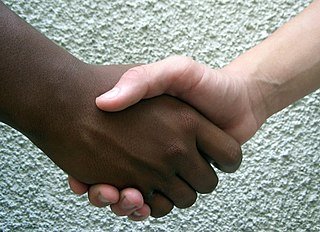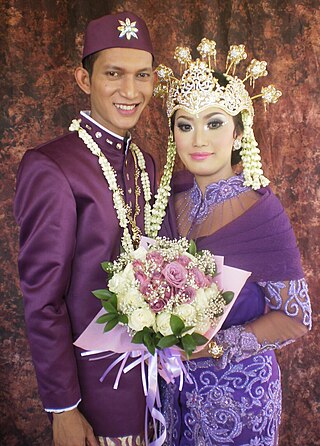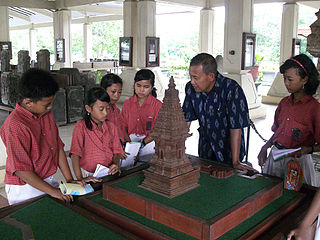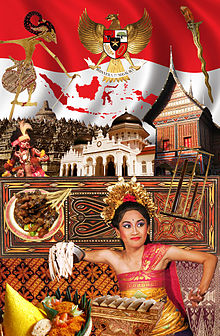
A handshake is a globally widespread, brief greeting or parting tradition in which two people grasp one of each other's hands and in most cases accompanied by a brief up-and-down movement of the grasped hands. Customs surrounding handshakes are specific to cultures. Different cultures may be more or less likely to shake hands, or there may be different customs about how or when to shake hands.

Respect, also called esteem, is a positive feeling or deferential action shown towards someone or something considered important or held in high esteem or regard. It conveys a sense of admiration for good or valuable qualities. It is also the process of honoring someone by exhibiting care, concern, or consideration for their needs or feelings.

Greeting is an act of communication in which human beings intentionally make their presence known to each other, to show attention to, and to suggest a type of relationship or social status between individuals or groups of people coming in contact with each other. Greetings are sometimes used just prior to a conversation or to greet in passing, such as on a sidewalk or trail. While greeting customs are highly culture- and situation-specific and may change within a culture depending on social status and relationship, they exist in all known human cultures. Greetings can be expressed both audibly and physically, and often involve a combination of the two. This topic excludes military and ceremonial salutes but includes rituals other than gestures. A greeting, or salutation, can also be expressed in written communications, such as letters and emails.

Hand-kissing is a greeting gesture that indicates courtesy, politeness, respect, admiration, affection or even devotion by one person toward another. A hand-kiss is considered a respectful way for a gentleman to greet a lady. Today, non-ritual hand-kissing is rare and takes place mostly within conservative class or diplomatic contexts. Today, the hand kiss has largely been replaced by a kiss on the cheek or a handshake.

The Sundanese are an indigenous ethnic group native to the western region of Java island in Indonesia, primarily West Java. They number approximately 42 million and form Indonesia's second most populous ethnic group. They speak the Sundanese language, which is part of the Austronesian languages.

Etiquette in Japan forms common societal expectations of social behavior practiced throughout the nation of Japan. The etiquette of Japan has changed greatly over the millennia as different civilizations influenced its culture. Modern Japanese etiquette has a strong influence from that of China and the Western world, but retains many of its unique traditional elements.

Table manners are the rules of etiquette used while eating, which may also include the use of utensils. Different cultures observe different rules for table manners. Each family or group sets its own standards for how strictly these rules are to be followed.

The Thai greeting referred to as the wai consists of a slight bow, with the palms pressed together in a prayer-like fashion. It has its origin in the Indian Añjali Mudrā, like the Indian namaste and Burmese mingalaba. The higher the hands are held in relation to the face and the lower the bow, the more respect or reverence the giver of the wai is showing. The wai is traditionally observed upon formally entering a house. After the visit is over, the visitor asks for permission to leave and repeats the salutation made upon entering. The wai is also common as a way to express gratitude or to apologise.

Etiquette in Asia varies from country to country even though certain actions may seem to be common. No article on the rules of etiquette, nor any list of faux pas, can ever be complete. As the perception of behaviors and actions vary, intercultural competence is essential. A lack of knowledge about the customs and expectations of Asian people can make even those with good intentions seem rude, foolish, and disrespectful.

Many matters of etiquette in the Middle East are connected to Islam as it is written in the Qur'an and how it has been traditionally understood and practiced throughout the centuries. Prescribed Islamic etiquette is referred to as Adab, and described as "refinement, good manners, morals, ethics, decorum, decency, humaneness and righteousness".

In general, Ghanaians emphasize communal values such as family, the importance of dignity, and proper social conduct.
Expectations regarding good manners differ from person to person and vary according to each situation. As the perception of behaviors and actions vary, intercultural competence is essential. However, a lack of knowledge about the customs and expectations of people in Australia and New Zealand can make even the best intentioned person seem ignorant, inconsiderate or even rude. Given the historic roots, it's very similar to British culture, specifically the United Kingdom, terms such as ‘fanny’ as well as the emphasis on politeness in queuing are observed in both cultures.
Etiquette in Latin America varies by country and by region within a given country.
In Pakistan, Islamic culture is predominant, but Pakistan also has its own cultural etiquette based mainly on South Asian influences.
In linguistics, an honorific is a grammatical or morphosyntactic form that encodes the relative social status of the participants of the conversation. Distinct from honorific titles, linguistic honorifics convey formality FORM, social distance, politeness POL, humility HBL, deference, or respect through the choice of an alternate form such as an affix, clitic, grammatical case, change in person or number, or an entirely different lexical item. A key feature of an honorific system is that one can convey the same message in both honorific and familiar forms—i.e., it is possible to say something like "The soup is hot" in a way that confers honor or deference on one of the participants of the conversation.

Sembah is an Indonesian greeting and gesture of respect and reverence. While performing the sembah, one clasps their palms together solemnly in a prayer-like fashion called suhun or susuhun in Javanese; or menyusun jari sepuluh in Indonesian and Malay, placing them in front of their chest and moving the pressed palms up to their chin, or all the way up until their thumbs touch the tip of their nose, while bowing slightly. Any of these two forms are made depending on the status of the person greeted.

Mano is an "honouring-gesture" used in Filipino culture performed as a sign of respect to elders and as a way of requesting a blessing from the elder. Similar to hand-kissing, the person giving the greeting bows towards the hand of the elder and presses their forehead on the elder's hand. Usually performed with the right hand, the person showing respect may ask "Mano po" or "[Pa-]bless po" to the elder in order to ask permission to initiate the gesture. Typically someone may mano to their older relatives upon entry into their home or upon seeing them.

Various codes of etiquette in Indonesia govern the expectations of social behavior in the country and are considered very important. Etiquette demonstrates respect and is a key factor in social interactions. Like many social cultures, etiquette varies greatly depending on one's status relative to the person in question. Some conventions may be region-specific, and thus may not exist in all regions of Indonesia. The following are generally accepted contemporary customs in Indonesia.

Japanese dining etiquette is a set of traditional perceptions governing specific expectations which outlines general standards of how one should behave and respond in various dining situations.















